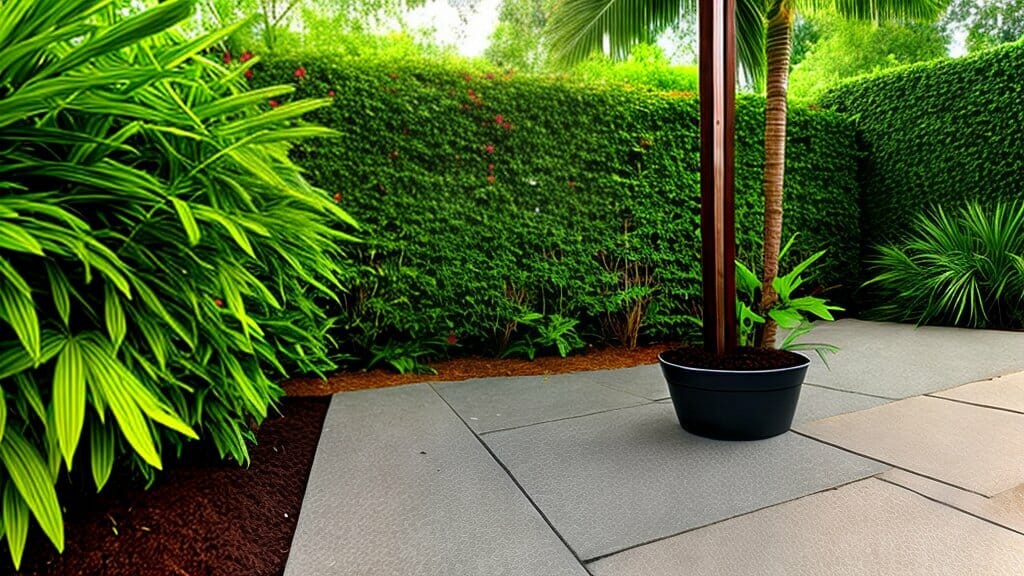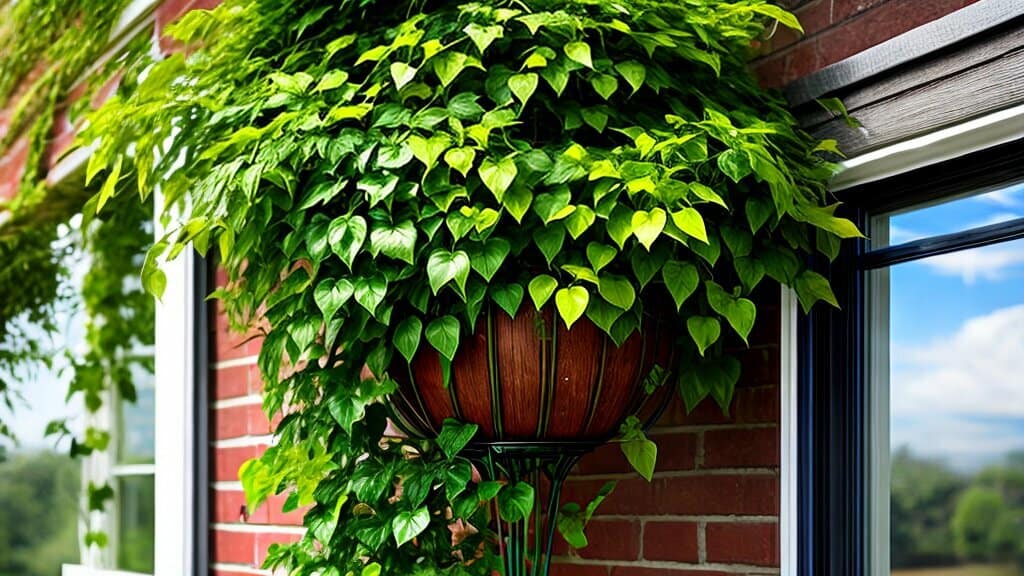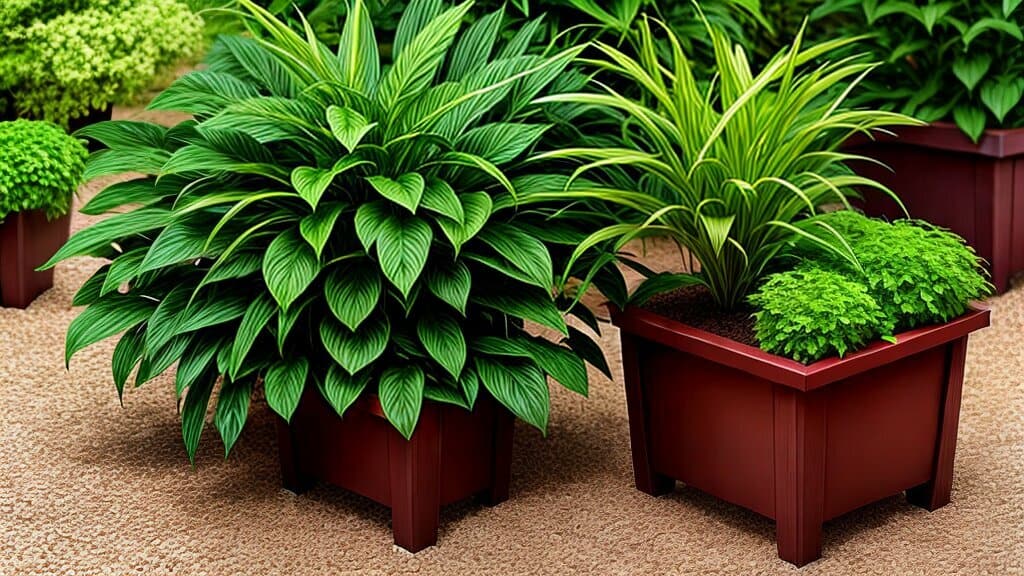Are you tired of using unsightly metal or plastic stakes to support your climbing plants? Look no further than the coco coir pole. Made from natural coconut coir fiber, these poles provide strength and stability while also promoting healthy growth for your plants.
Coco coir poles offer a sustainable and eco-friendly alternative to traditional plant supports. Unlike metal or plastic, they are biodegradable and can be reused or composted after use. They also have the added benefit of retaining moisture and providing aeration, which can encourage root development and prevent plant stress.
Whether you’re an indoor or outdoor gardener, coco coir poles can be a valuable addition to your plant care toolkit. Not only do they provide crucial support for climbing plants, but they can also be used for vertical gardening and creating living walls.
In the following sections, we’ll explore the benefits of using coco coir poles, how to choose the right one for your plants, and tips for successful installation and maintenance.
Key Takeaways:
- Coco coir poles provide natural and sustainable support for climbing plants.
- They retain moisture, provide aeration, and encourage root development.
- Coco coir poles are suitable for both indoor and outdoor gardening and can be used for vertical gardening and living walls.
Benefits of Using Coco Coir Poles
If you’re looking for a natural and sustainable solution for your climbing plants, coco coir poles should be at the top of your list. Not only do they provide sturdy support, but they also offer a range of benefits for your plants.
Retains Moisture: Coco coir is highly absorbent, meaning that it can retain moisture well. When used as a pole for climbing plants, it can help regulate water levels and prevent the soil from drying out quickly.
Provides Aeration: Along with retaining moisture, coco coir poles provide necessary aeration. Coir fibers are naturally porous, allowing air to pass through and reach the roots of your plant.
Encourages Root Development: Because of their porous nature, coco coir poles can also help promote healthy root development. As your plant grows, roots will naturally attach to the fibers and absorb nutrients more efficiently.
Eco-Friendly: Unlike traditional plant stakes made from plastic or metal, coco coir poles are a sustainable option. They’re made from natural materials that are biodegradable and won’t harm the environment.
For indoor and outdoor gardening alike, coco coir poles offer a range of benefits that can help your climbing plants thrive. Plus, their eco-friendly nature makes them a great choice for environmentally conscious gardeners.
Benefits of Using Coco Coir Poles:
| Advantages | Benefits |
|---|---|
| Retains Moisture | Prevents soil from drying out quickly |
| Provides Aeration | Allows air to reach plant roots |
| Encourages Root Development | Promotes healthy growth |
| Eco-Friendly | Biodegradable and sustainable |

Choosing the Right Coco Coir Pole
When considering coco coir poles for your plants, it’s crucial to choose the right one to ensure optimal growth and stability. Here are some factors to keep in mind:
| Factor | Considerations |
|---|---|
| Height | Ensure the coco coir pole is tall enough for your plant to climb. Consider the variety and growth habit of your plant. |
| Thickness | Thicker poles provide more support, but can also be more difficult to work with. Consider the weight and size of your plant as well. |
| Quality of Coir Fiber | Opt for high-quality coir fiber that is sturdy and long-lasting. Check for signs of mold or rot, and avoid poles with large gaps or loose fibers. |
It’s also important to purchase from a reputable coir pole supplier to ensure you’re getting a quality product. Look for suppliers with positive reviews and reliable customer service.
Using Coco Coir Poles for Vertical Gardening
Vertical gardening is becoming increasingly popular for its practicality, space-saving qualities, and aesthetic appeal. Growing climbing plants on coco coir poles is a natural and sustainable method of creating a green wall or vertical garden.
For instance, you can use coco coir poles to grow climbing vegetables like beans and peas, or flowering plants like Philodendron or Monstera. The poles also work well for training vines or creating living walls in indoor spaces.
By providing natural support, the coco coir poles encourage plant growth, while the plants’ natural beauty adds to the design element of the garden. Using coco coir poles in vertical gardening is both practical and eco-friendly.

Creating a Living Wall
If you want to create a living wall, start by securing a metal frame to the wall or vertical surface of your choice. Then weave the pole through the frame and attach it using twist ties or clips.
Once the coco coir poles are in place, you can start planting. Begin by planting at the base of the wall and work your way up. Space your plants out evenly to cover the entire wall and create the desired effect.
Training Vines with Coco Coir Poles
Another way to use coco coir poles for vertical gardening is by training vines or creepers to climb up the poles. Simply insert the pole into the pot or ground and secure it properly. Then attach the vine to the pole using twist ties or soft twine.
Be sure to check the plant’s growth regularly and adjust the height and position of the pole accordingly. As a rule of thumb, the coco coir pole should be at least a foot taller than the plant to allow for growth.
In conclusion, using coco coir poles for vertical gardening is a practical and eco-friendly alternative to traditional plant supports. Whether you’re creating a living wall or training vines, coco coir poles provide natural support, encourage healthy growth, and add to the aesthetic appeal of your garden.
How to Use Coco Coir Poles
Using coco coir poles is simple and effective for supporting climbing plants. Follow these step-by-step instructions to get the best results:
- Insert the pole: Gently push the bottom of the coco coir pole into the potting soil, being careful not to damage the plant roots or stems. For outdoor gardening, dig a hole slightly deeper than the pole and insert it firmly into the ground.
- Secure the pole: Use garden tape or twine to secure the plant’s stem to the coir pole near the base. This will prevent the plant from falling off the pole as it grows.
- Train the plant: As the plant grows, use additional garden tape or twine to gently tie it to the pole at intervals of a few inches. This will encourage the plant to climb and wrap around the pole.
- Prune the plant: As the plant reaches the top of the pole or begins to spread out, prune it back to prevent overcrowding and encourage new growth.
With proper care and attention, your climbing plants will thrive and benefit from the support of a natural and sustainable coco coir pole. Here’s a visual representation of how to use coco coir poles:

Maintaining Moisture Levels in Coco Coir Poles
Keeping coco coir poles moist is essential to promote healthy plant growth. As an eco-friendly alternative to traditional plant support, coco coir poles have the ability to retain moisture, providing optimal growing conditions for climbing plants.
The most effective way to keep coco coir poles moist is through misting or soaking them. Consider adding a layer of sphagnum moss at the base of the pole to help maintain moisture levels.
It’s important to monitor the moisture level of your coco coir pole regularly. If it feels dry to the touch, it may need to be watered. Avoid overwatering, as this can lead to root rot and damage the plant’s health.

How Tall Should Your Coco Coir Pole Be?
One common question when using coco coir poles for plant support is how tall the pole should be. The answer depends on the type of plant you are growing and its growth habits.
For shorter climbers such as philodendrons or pothos, a shorter pole of around 2-4 feet is sufficient. Taller climbers like monstera or climbing roses may require a pole of 6-8 feet or more.
It’s important to consider the space available for the plant to grow and adapt the pole height accordingly. You can always adjust the height as the plant grows by adding an extension or replacing the pole with a taller one.

Tip: When using coco coir poles for plants with vining habits, it’s best to start with a tall pole from the beginning. These plants grow quickly and benefit from the support of a tall pole to climb.
DIY Coco Coir Pole: Making Your Own Plant Support
Creating your own coco coir pole is a cost-effective and fun way to enhance your gardening experience. Here’s a step-by-step guide to making your own plant support:
- Start by gathering your materials. You’ll need a length of PVC pipe or wooden dowel, coco coir fiber, scissors, twine, and a spray bottle filled with water.
- Cut the PVC pipe or wooden dowel to your desired height, keeping in mind the growth habit of the plant you wish to support.
- Take a handful of coco coir fiber and wrap it around the PVC pipe or wooden dowel, beginning at the bottom and working your way up. Secure the fiber with twine as you go.
- Continue wrapping the coir fiber until you reach the top of the PVC pipe or wooden dowel. Secure the end of the fiber with twine.
- Using a spray bottle, moisten the coir fiber until it is thoroughly saturated. This will help to activate the natural adhesive in the coir fiber, ensuring that it adheres to the PVC pipe or wooden dowel.
- Allow the coir pole to dry completely before using it to support your plants.
By creating your own coco coir pole, you can customize it to your specific needs and preferences. Plus, you’ll feel a sense of satisfaction every time you see your plants thriving with the support of your handmade creation.

Conclusion
Coco coir poles are the ultimate solution for supporting climbing plants in a natural and sustainable way. By using these eco-friendly poles, you can provide your plants with necessary stability, aeration, and moisture retention, promoting healthy growth and lush foliage.
Whether you’re an indoor or outdoor gardener, coco coir poles are a versatile and cost-effective option. They’re also ideal for vertical gardening, allowing you to create living walls or support climbing vegetables.
When choosing a coco coir pole, make sure you consider its height, thickness, and quality of the coir fiber. You can purchase coco coir poles from reputable suppliers or even make your own using our DIY guide.
By following our step-by-step instructions, you can easily use and maintain coco coir poles for optimal plant growth. Remember to monitor moisture levels and adjust the pole height as your plants grow.
Upgrade your gardening game and try using coco coir poles for the ultimate plant support. Your plants (and the environment) will thank you.
FAQ
Q: What are coco coir poles and how do they support climbing plants?
A: Coco coir poles are natural and sustainable supports for climbing plants. They provide stability and promote healthy growth by allowing the plants to latch onto the fibers and grow vertically.
Q: What are the benefits of using coco coir poles for plant support?
A: Coco coir poles have several advantages, including the ability to retain moisture, provide necessary aeration, and encourage root development. They are also eco-friendly and suitable for both indoor and outdoor gardening.
Q: How do I choose the right coco coir pole for my plants?
A: Consider factors such as height, thickness, and quality of the coir fiber when selecting a coco coir pole. It is also important to purchase from reputable coir pole suppliers to ensure quality and reliability.
Q: Can coco coir poles be used for vertical gardening?
A: Yes, coco coir poles are great for vertical gardening. They can be used to create living walls or support climbing vegetables like beans and peas. Proper installation techniques and plant care are important for successful vertical gardening with coco coir poles.
Q: How do I use coco coir poles effectively?
A: To use coco coir poles effectively, insert the pole into the pot or ground, secure it properly, and train plants to climb on it. Tying and pruning techniques can also be used to encourage healthy growth.
Q: How do I maintain moisture levels in coco coir poles?
A: It is important to maintain moisture in coco coir poles to support plant growth. Watering techniques such as misting or soaking the pole can help. Monitoring moisture levels and preventing drying out is crucial for the health of the poles and plants.
Q: How tall should my coco coir pole be?
A: The appropriate height of a coco coir pole depends on the type of plant and its growth habit. General guidelines suggest adjusting the pole height as the plant grows to provide adequate support.
Q: Can I make my own coco coir pole?
A: Absolutely! Making your own coco coir pole is a cost-effective and satisfying option. Step-by-step instructions include sourcing materials, cutting and shaping the coir fiber, and securing it for use as a plant support.
